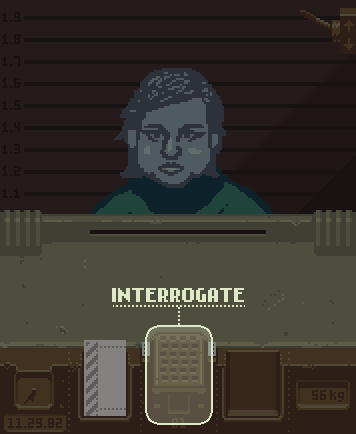

Papers, Please puts players in control of an unnamed border agent in the fictional Eastern Bloc totalitarian state of Arstotzka in 1982. (Screenshot from ‘Papers, Please,’ designed by Lucas Pope) Which, in the words of Obi-Wan Kenobi, was true from a certain point of view. Eventually, I decided that “doing paperwork” had to mean toiling on some kind of contraption made of paper. Then he sighed, said his boss was “a slave driver,” and carried on eating.Ĭlearly, from Dad’s mournful body language and dyspeptic pronunciation, one could infer that paperwork was bad. One of my earliest childhood memories involves my father, hunched over his dinner, sawing away at some meat substance and complaining about “paperwork.” He spit out each syllable as if it were a piece of insect that had flown into his mouth.

Correlate missing or wrong seals against the appropriate countries in the documents chapter of your rulebook.” Another layer of bureaucracy and paperwork has been laid upon your shoulders. “Double-check that required documents contain valid seals. So when you arrive at work, you are not surprised to find a bulletin from the ministry announcing tighter security measures. This morning, you read in The Truth of Arstotzka, the state newspaper, that thieves broke into the Ministry of Admission. Others, perhaps, come for more nefarious purposes. Some come to work some are just passing through. Every day, immigrants and citizens returning home queue in an endless line, snaking through barbed-wire obstacles, in the hopes of entering the country. Your wife is sick and you can barely afford to pay the heating bill. Thus, if you assumed that your opponent was playing each option with equal probability, it would be beneficial to play paper with higher probability and rock with lower probability.Every day, you leave your family at your state-provided apartment and walk to work: a gray pillbox, flanked by soldiers, on the outskirts of East Grestin. This game has a different mixed strategy Nash equilibrium because of the fact that winning with paper against rock has a higher payoff than any other situation, and losing with rock against paper has a lower payoff than any other situation. The resulting payoff matrix would look like: However, if the game is altered slightly by simply altering the payoffs for a single situation, for example making the payoff for winning with paper against rock 2 and losing with rock against paper -2, the strategy for the game will change. This result can be obtained through mathematical calculation, however, the symmetry of the game makes it incredibly obvious that each option should have an equal expected payoff if the opponent’s option is unknown. Thus, both players should choose rock with 1/3 probability, paper with 1/3 probability, and scissors with 1/3 probability. Since each option is nearly symmetrical with each of the other options, it should be obvious that the mixed strategy Nash equilibrium for this game turns out to be that each player should choose each option with equal probability. Now let us examine this game in terms of mixed strategy Nash equilibria. Thus, there are no pure strategy Nash equilibria. There is no option in which both players’ options are the best response to the other player’s option. If we examine the payoff table for the game of rock, paper, scissors, it becomes evident that there is no such equilibrium.

In a pure strategy Nash equilibrium, each player’s option must be the dominant strategy to the other player’s dominant strategy. Let us examine this in terms of pure strategy Nash equilibrium. In this version of the game, we assume that losing a round of the game results in a payoff of -1, winning a round results in a payoff of 1, and tying in a round results in a payoff of 0. Let us examine the payoff matrix for such a game: In the popular game called Rock, Paper, Scissors, each of the two players’ objectives is to choose the option, out of rock, paper, and scissors, that beats his opponent’s option, rock beating scissors, paper beating rock, and scissors beating paper.


 0 kommentar(er)
0 kommentar(er)
